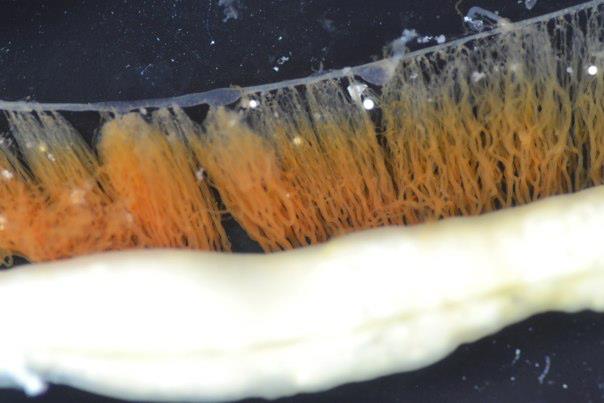BEHAVIOUR
ECOLOGY
The main ecological role of deposit feeding holothurians on coral reefs and sandflats is the bioturbation of the sediment [1]. Bioturbation results in the removal of organic material from the sediment as well as the aeration of sediment. Michio et al. (2003) [7] suggest that holothurian feeding activity reduces both the bacterial and microalgal loads in coral reef sediments.
REPRODUCTION
Most holothurians are gonochoric, meaning they have separate sexes. They have a single gonad and spawn their gametes into the ocean, where fertilisation occurs. Studies examining the reproduction biology of H. edulis have found that there is a lack of seasonality in terms of spawning period and that H. edulis shows low reproductive effort. In addition to sexual reproduction, holothurians have the ability to asexual reproduce. Such reproduction via transverse binary fission has been noted in this species [4].

Gonad of H. edulis
LOCOMOTION
Locomotion in H. edulis is slow and sluggish and occurs through a combination of peristaltic movements, muscular contraction and relaxation, and via the use of the their tubed feet. Their buccal podia can also be used to assist movement by attaching to the substrate, allowing the rest of the body to drag itself forward.
INVERSION
A novel behaviour shown holothurians is the ability to invert themselves if they have been flipped upside-down. Through a combination of attachment by the buccal podia and tube feet, holothurians are able to rapidly return themselves to an upright position, minimising the risk of predation.
H. edulis using its buccal podia to invert itself
|